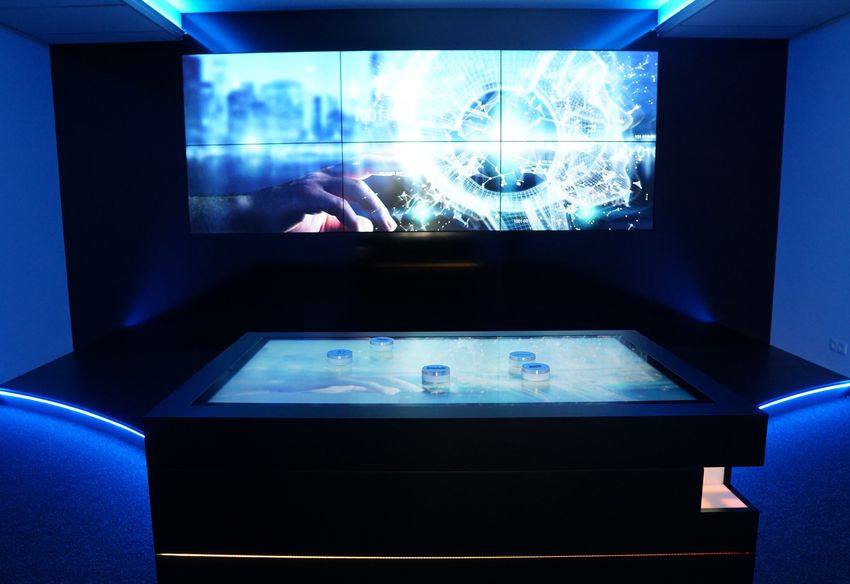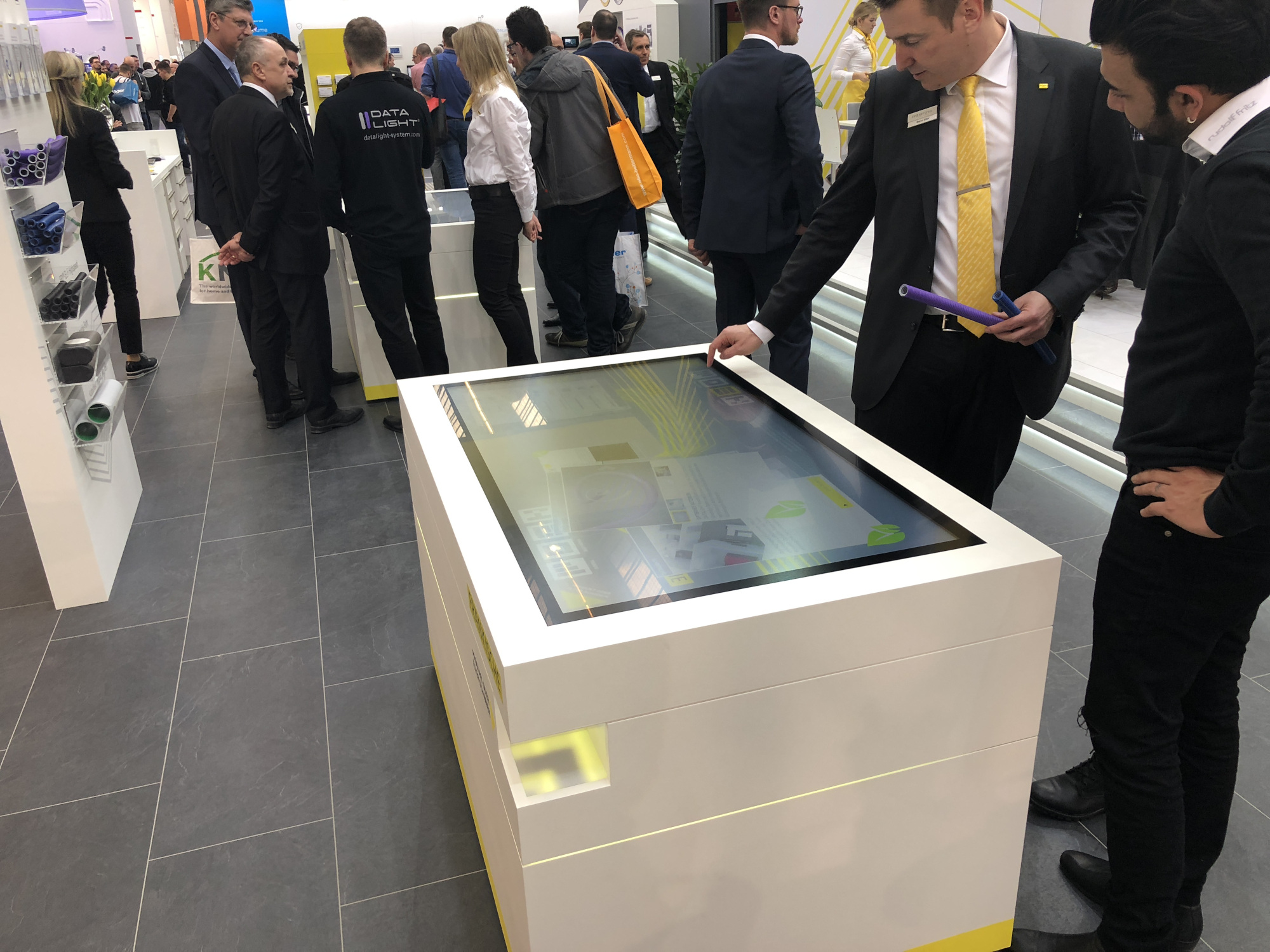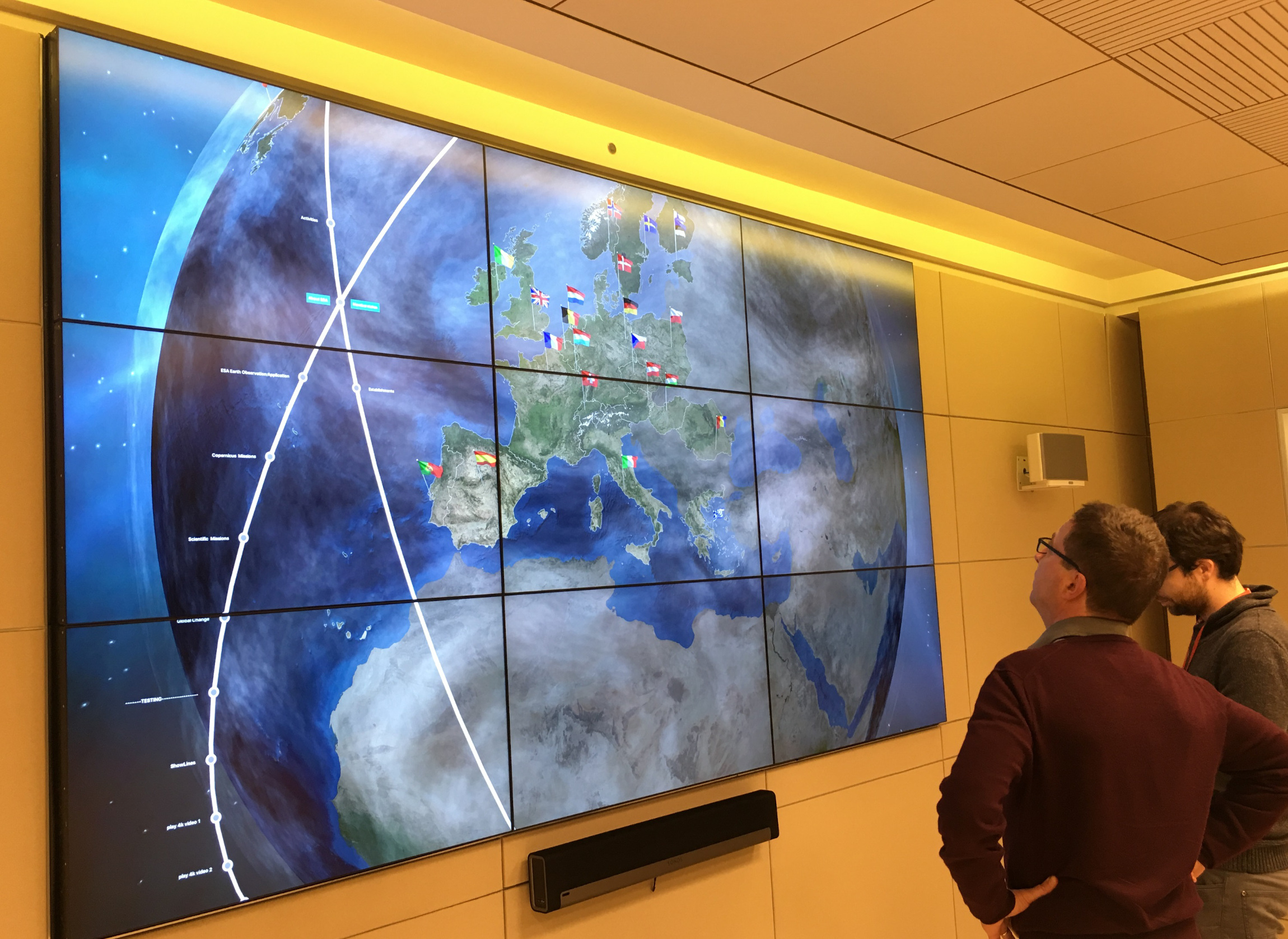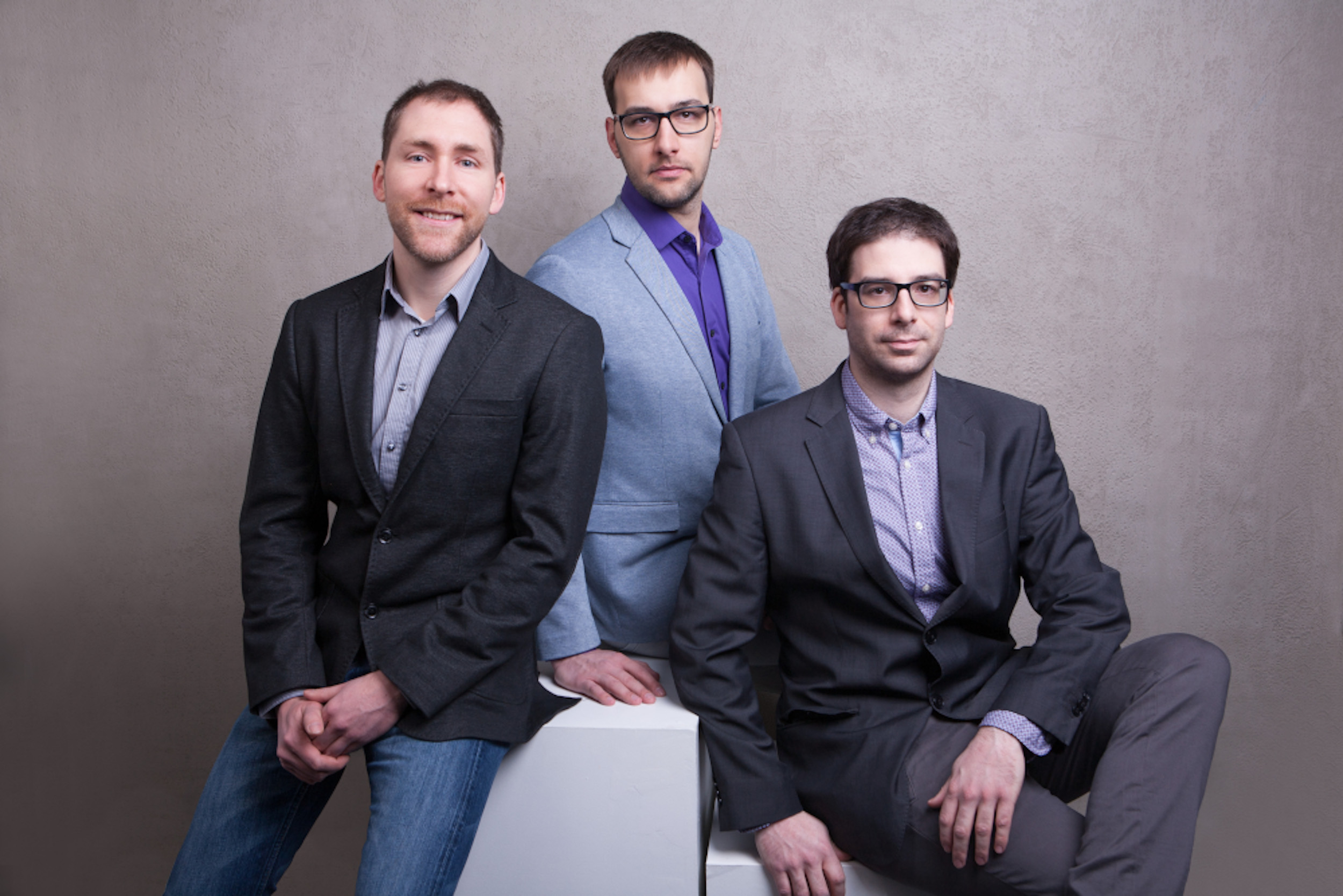Sustainability
Ella Einhell: "Happy beef is always blue"
Ella Einhell turns bones into glass, drawing on an old …

On behalf of ministries and museums, the Berlin-based company Garamantis stages content. For this, they have now been awarded the Kultur- und Kreativpilotenpreis. Their complex, multimedia concepts not only shine through originality and simplicity. They also stand out for their great technical know-how. We were on site at the Euref Campus and took a look.
In the next few days, the "Jauch dome" in the Schöneberg gasometer will be dismantled and shipped to Düsseldorf. A second Euref campus is being built there. The company that staged the architects' plan for the new campus sits not thirty meters diagonally from the former "Jauch dome." It is one of the winners of the Kultur- und Kreativpilotenpreis, which was presented last December. The door to Garamantis' office is wide open. The inconspicuous entrance barely hints at how many ingenious ideas are being created here. Outside, it's pouring rain and a dashingly cold wind sweeps across the asphalt; inside, two men bend over their monitors amidst devices and curious objects.
Garamantis' headquarter, which seems to be a workshop, warehouse and office all rolled into one, is usually a bit busier and, as one of the two men suggests with an apologetic shrug, tidier too. Berlin in January, lockdown, home office, customer care from afar - who cares about a little chaos. Andreas Köster, Head of Communications, puts on a mask and presents the showrooms next door. Here, too, there is a bit of chaos. A few half-built multi-touch scanner tables, Garamantis' bestseller, are blocking up the room, and there is noise and work going on in the neighboring building. In the small showroom, however, everything looks quite presentable. Here you can get an idea of what the Garamantis' team is up to.
Andreas Köster stands at one end of the white multi-touch scanner table, on which colorful animated circles shoot around like in a pinball machine. The circles represent Garamantis' projects in miniature. He stops one of the circles with his index finger and throws it onto the opposite wall, where the project opens. That in itself seems like magic. But it's still not enough to lure a reporter from Generation Y behind the stove! Andreas Köster casually throws one project after the other onto the wall and explains what it's all about.


Garamantis' expertise lies in presenting content in a fun and easy to grasp way. By engaging many senses, they create a memorable experience for their customers and the audience
Since the company was founded in 2014 by Oliver Elias and Marcus Dittebrand, Garamantis has grown strongly and landed several larger projects in addition to many small ones. Their clients include companies, ministries, universities, agencies, trade fairs and museums. One of the largest projects, explains Köster, was created a few years ago for the German Spy Museum on Potsdamer Platz, for whose opening they designed, among other things, 200 installations, 150 of them interactive, and a ten-meter-long multi-touch wall. The public thus had the pleasure of absorbing the museum's contents playfully and through sophisticated haptic and visual aesthetics. Because that's Garamantis' specialty: making content easy to grasp and staging it with play. This is called emotional learning, which means nothing other than that content can be absorbed more easily when multiple senses are involved in perception. The focus is usually on visual and haptic elements. In addition to the frequently used multi-touch scanner tables, this includes various other technologies such as interactive installations, mobile applications, virtual reality and much more.
Each new project, says Köster, is a new challenge. And it's not always entertaining and playful; there are also serious projects. For the European Space Agency (ESA), for example, they have set up a showroom near Rome together with Ars Electronica from Linz, Garamantis' most important partner; there, in the "Center for Earth Observation," country delegations go to get a picture of the research results of their funded satellite programs. Soon, Garamantis will also build an interactive showcase for ESA, behind which a 200-kilogram satellite will be displayed. And they recently developed a climate dome for the German Federal Ministry for Economic Cooperation and Development for the "Grüne Woche." In the dome, 12 people were able to beam themselves to Madagascar via VR goggles to observe the effects of climate change there. The special feature was that, in addition to the 360-degree view of Madagascar, they could also smell the sea and feel the heat.
Their complex installations and services, says Köster, require a "colorful development potpourri". Almost all of Garamantis' eight permanent employees are proficient in various programming languages and can handle the 3D program Unity. However, the company not only provides software, but also takes care of the hardware and the smooth running of the events. To do this, they have a "loose network" of carpenters, metal and model makers, translation agencies, agencies, web and graphic designers and, of course, software developers with whom they work. And Köster emphasizes that they have done all this without outside capital; the company has "grown organically" and sees itself more as an agency than a startup.
For their complex installations and services, the Garamantis team needs a lot of knowhow: all of them know several programming languages and can even program robots
Oliver Elias rises from his seat and walks over to the showroom. As one of the founders of Garamantis, he knows best about the company's development. His black-rimmed glasses keep fogging up over his mask as he talks, which, the reporter thinks with surprise, gives him the nimbus of a nerd. In a positive sense, of course. Elias studied media informatics and wrote his diploma thesis at Ars Electronica. The well-known festival of art and technology from Austria gave their company a "foundation of projects," Elias says, and has become the most important partner over the years. Other partners Garamantis collaborates with include Euref Campus, Berlin Partner for Business and Technology, and the agency Hustle and Bustle, through which they opened a second office in Singapore. Together they form a strong network.

The decision not to have investors was a conscious one, says Elias. It wasn't easy, he recalls; especially in the beginning, they were shuffling from "month to month," from job to job. The work is very complex: there is the hardware part that has to be built and connected to the software, and then there is the content that has to be integrated. And all this has to be processed as much as possible in a simple, easy-to-use concept with the goal of creating a memorable experience for the client and the audience. According to Elias, it is precisely in this, in the simplicity and corruptibility of the content presented, that the great art lies. The innovative development of the concepts is preceded by a constant evolution of the technological skills and capabilities of Garamantis' team. For example, he said, some companies have similar offerings to theirs, but the overall package and the affordable price often make the difference, which is why people would choose them over the competition.
For its multi-touch scanner table, Garamantis was awarded the Innovation Prize IT of the Initiative Mittelstand in 2017. And the German government's Kultur- und Kreativpilotenpreis, which the company has just won, also gives the company a valuable distinction. It includes a one-year mentoring program to help optimize processes and offerings. They can now allow themselves to "think strategically," says Elias, adding that they want to further expand the service and try to provide content in a complete package in the future, too; up to now, this has still been worked out by other agencies or curators. The team around Garamantis is working hard to develop an even stronger unique selling proposition. The name Garamantis, Elias concludes, has "no deeper meaning" and is borrowed from Greek mythology. It simply sounds good. And it's useful for marketing. Even old Freud knew that.
Category: Innovation & Vision
Also a good read
Subscribe to our monthly newsletter!